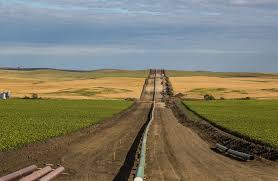7 Things to Know About Standing Rock and DAPL
The small whisper at Standing Rock in North Dakota and South Dakota, has become an alarm as conflicts between protestors and government officials continue to intensify. The matter at hand is complicated, with passionate arguments being made on both sides.

We need oil. But at what cost? Members of the Standing Rock Sioux Tribe, joined by scores of supporters, including celebrities, are protesting construction of a controversial oil pipeline. Here are seven things to know about the Standing Rock situation.
- The pipeline in question is called the Dakota Access Pipeline (DAPL) or the Bakken Pipeline. It is owned by Energy Transfer Partners LP (75%) and Phillips 66 (25%), both Texas-based companies.
- The $3.7 billion pipeline, 30-inches in diameter, spans 1,172 miles from the Bakken oil fields in North Dakota to an existing facility in Pakota, IL. It can shuttle enough oil to produce 3.743 million gallons of gasoline per day. Plans take it under the Missouri River, which already has eight other pipelines crossing it.
- The Standing Rock Sioux Tribe has been protesting the project since April 2016. It is joined by 300 tribal nations. The protestors are concerned about the safety of the water supply and the disruption of sacred ground in the path of the pipeline. Although the pipeline does not pass through existing reservations, because the tribes have been relocated so many times, it encroaches on sacred burial grounds left behind in the relocation.
- The protestors are concerned that the Army Corps of Engineers fast-tracked approval of the project, without thorough studies of environmental impact. The Corps has not yet approved an easement under the Missouri River. Otherwise, work on the pipeline is nearly finished.
- Not all members of the Standing Rock Sioux Tribe are against the pipeline. One tribe official says that two years ago, when the hearings were held, no one cared enough to attend. Now, crowds are out of control, and most of the protesters aren’t even tribe members.
- The pipeline was originally planned to pass near Bismarck, but it was moved south because of citizens’ concerns about water safety.
- The Standing Rock Sioux Tribe has produced a documentary, which they hope will convince President Obama to deny the easement under the Missouri River.

So, there you have it: Seven things to know about Standing Rock and DAPL. The matter is complicated and difficult to sort out. This will not likely be the last of this type of protest as pipelines continue to snake across the county. The United States is host to the largest network of oil pipelines in the world, with more than 72,000 miles of crude-oil pipe alone.
I’ve sorted this matter out as best I can, but please feel free to comment below with additional information!
Sources:
- http://www.cnn.com/2016/09/07/us/dakota-access-pipeline-visual-guide/index.html
- http://www.latimes.com/nation/la-na-showdown-at-standing-rock-20161108-story.html
- https://www.thenation.com/article/police-attacked-standing-rock-activists-for-hours-why-are-they-calling-it-a-riot/
Ann Silverthorn




Leave a Reply